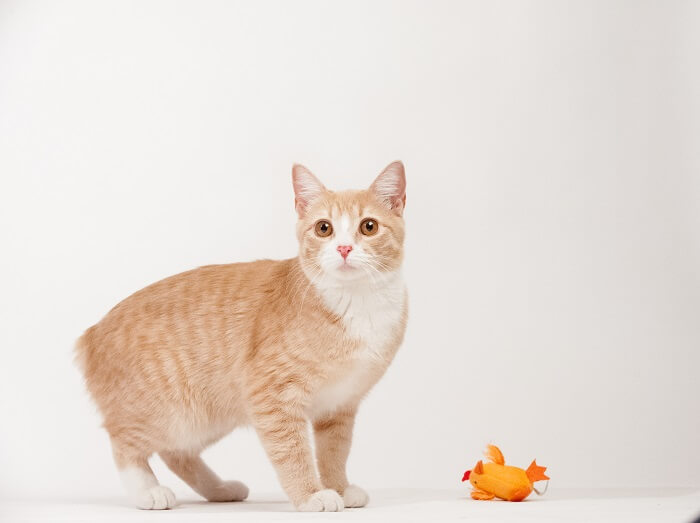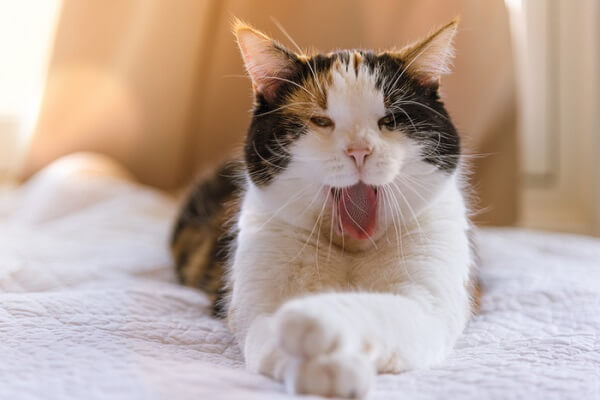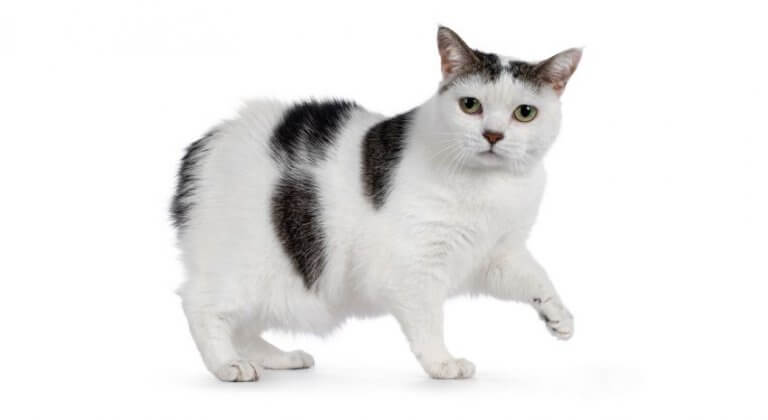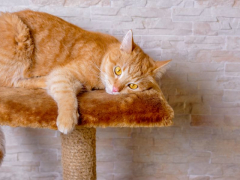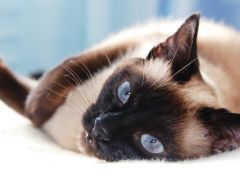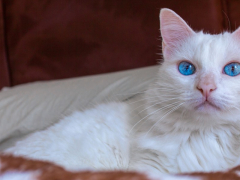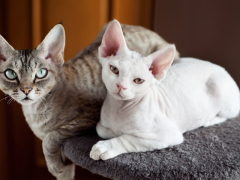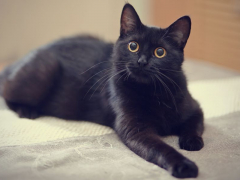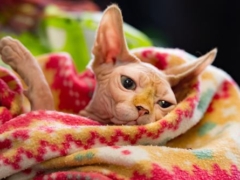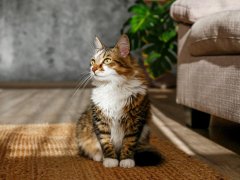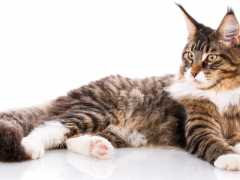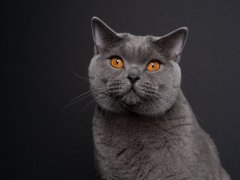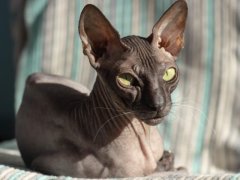Personality and Temperament
The Manx is one of a few tailless cat breeds, yet it’s probably the best-known as it is more widespread than Kurilian Bobtail and Japanese Bobtail cats, which share some similarities. Depending on location and registry, these cats might have long or short hair in a variety of different colors - and it’s worth noting that some purebred cat registries refer to long-haired Manx cats as Cymric cats.
While the Manx cat breed standard requires show quality animals to be either tailless or nearly tailless, pet quality Manx cats may have slightly longer tails. In fact, there are a few nicknames for Manx cats with different tail lengths. “Rumpy” manx cats are completely tailless, while “rumpy risers” have small stubs. “Stumpy” manx cats have partial tails, and a manx with a nearly full length tail is called a "Longy."
Social and intelligent, members of the Manx family are often compared to dogs thanks to their high play drive and their tendency to develop strong bonds with their human friends and animal companions alike.
These cats are incredibly athletic, with powerful hind legs. Their ability to jump to great heights means that their families often find them peering down from the highest cupboard in the kitchen, or perhaps from the top of the refrigerator.
Not only do Manx cats enjoy high jumps, they have an intense sense of curiosity. Their agile paws easily jiggle open latches and the drawer pulls, enabling access to small areas filled with your most fascinating belongings.
If you bring a Manx into your life, don't be surprised if you find them following you to the shower, where they'll hide behind the curtain or door and reach in to catch droplets with their paws. Perhaps because of their island origins, Manx cats have a tendency to like water – unless, that is, you're attempting to bathe them!
Fantastic personalities make Manx cats outstanding companions for nearly any family - and adorable, unusual looks make them even more fun to spend time with.
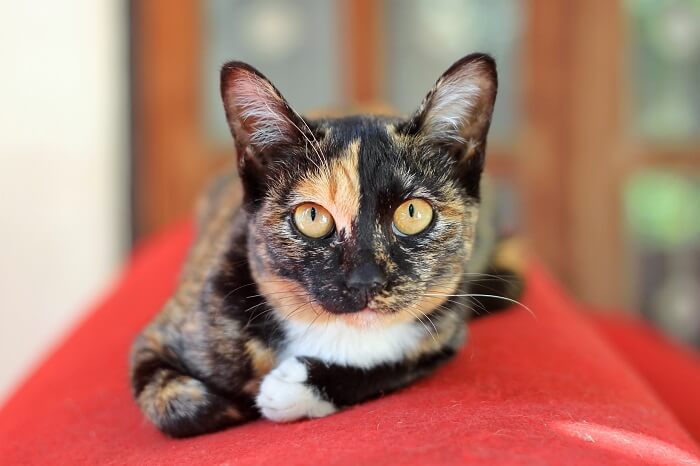
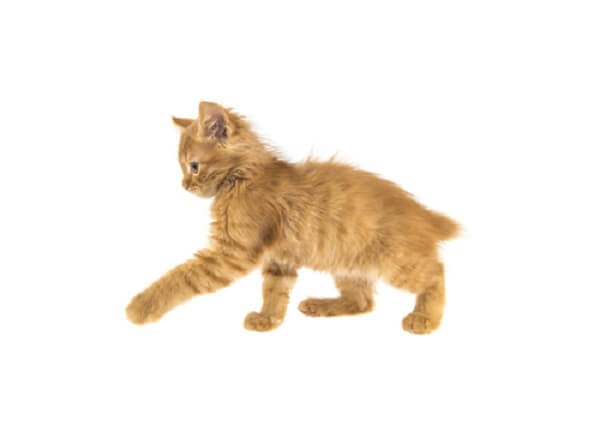
Care
Nutrition
Grooming
Exercise
Health
Manx cats have no special dietary needs; however, it is best to offer a high-quality diet that includes real meat or fish as the number one ingredient.
Shorthaired Manx cats require brushing just once or twice per week to remove excess hair. If you have a long-haired Manx, plan to brush them at least once per day to prevent mats from forming in their fine undercoat.
As the Manx is prone to jumping and climbing with great vigor, you may wish to keep their claws trimmed short as a method of providing some protection for your belongings.
One more thing: Just like other breeds, Manx cats benefit from at home dental care. Consider teaching your kitten to accept toothbrushing from a young age.
The Manx typically displays incredible athletic prowess, running at high speeds, leaping to the highest possible heights, and climbing anything that happens to be available. Tall cat towers, scratching posts, and a wide variety of toys can help satisfy your cat's play drive. Since Manx cats appreciate interactive play, look for toys that let you be part of the action, too!
Many Manx cats enjoy excellent health, however the breed is prone to certain issues including a birth defect called Manx syndrome. Manx syndrome is a spinal abnormality that affects the central nervous system, causing issues such as constipation, incontinence, and hind leg paralysis.
The Manx has a higher than average risk of Feline Lower Urinary Tract Diseases including bladder stones.
Skeletal malformations can occur as well, sometimes leading to major problems and sometimes simply affecting the cat's gait. If your cat has a malformation, it’s possible that they will ultimately need some help managing arthritis symptoms as they get older.
History
The Manx cat originated on the Isle of Man, located in the Irish Sea. There, members of the breed were originally referred to as "stubbin" cats, a term that some locals continue to use today.
Like all domestic cats, the Manx is a descendent of the African wildcat (Felis lybica). The first domestic cats to arrive on the Isle of Man probably had long tails, but one or more had to be carrying the dominant gene that causes natural, tailless mutation. The spontaneous mutation that causes Manx cats to be born without tails became more common on the Isle of Man due to a lack of genetic diversity over time.
These unique cats were a bit of a curiosity when they were first exhibited in cat shows during the late 1800s. The first Manx cat breed standard was developed in 1903, and the breed has the distinction of being among the first breeds to be officially recognized by the Cat Fanciers Association. Its Manx registry records go back to the 1920s.
Today, all major cat registries accept Manx cats, and responsible breeders frequently outcross with tailed domestic cats to enhance genetic diversity and continue improving the breed.
Four other breeds have been developed using Manx cats as foundation stock. These include the Isle of Man shorthair, the Isle of Man longhair, the Tasman Manx, and the Cymric cat.
